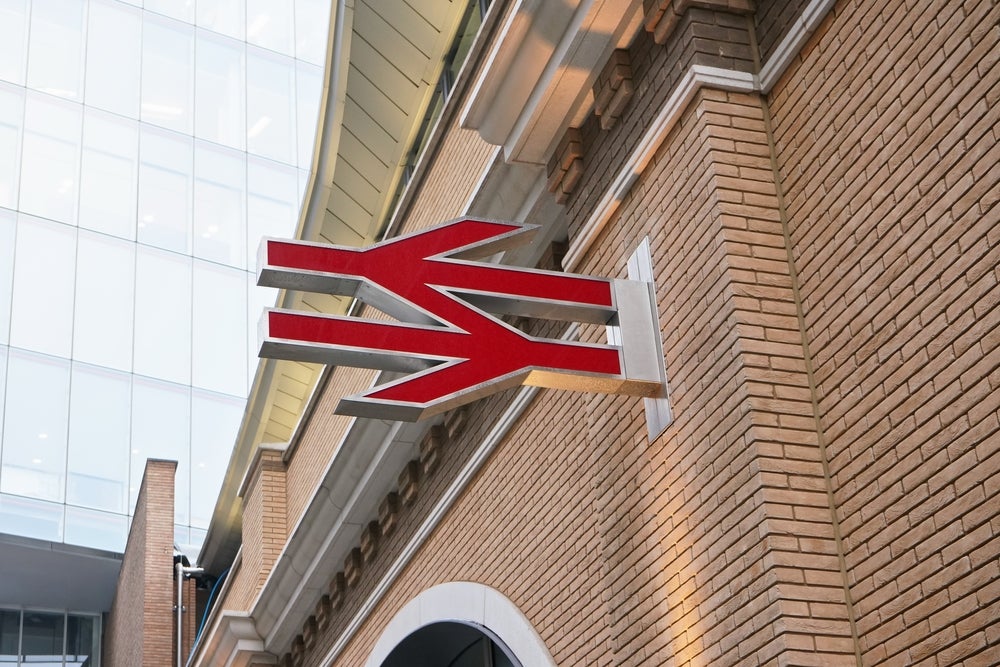
Nordic region’s leasing
industry slow to recover after entering crisis late, reports
Antonio Fabrizio.
Nordic leasing held up relatively
well during the crisis years of 2008 and 2009, with limited
declines in new business, and credit losses staying flat.
However the picture is mixed in
2010 in terms of how lessors operating in the four countries of
Denmark, Finland, Norway and Sweden are faring.
How well do you really know your competitors?
Access the most comprehensive Company Profiles on the market, powered by GlobalData. Save hours of research. Gain competitive edge.

Thank you!
Your download email will arrive shortly
Not ready to buy yet? Download a free sample
We are confident about the unique quality of our Company Profiles. However, we want you to make the most beneficial decision for your business, so we offer a free sample that you can download by submitting the below form
By GlobalDataCountry
snapshots
Among the worst hit of the Nordic
economies is Denmark. In the first half of 2010, new business
dropped to DKK11.3bn (€1.5bn), down from DKK13.5bn a year before,
the Association of Danish Finance Houses reports.
The decline is blamed on lack of
capital, a higher price of funding and tighter credit standards
from lessors.
Christian Brandt, CEO of the
association, says: “Looking at the numbers, we can’t say it is over
yet.
“Compared to the first half of 2008
and 2009, it has clearly worsened. Realistically, we won’t see 2009
levels this year or next.”
Brandt does say that the “worst” is
over, however.
“Germany normally represents 50% of
our exports, and the German market is now improving which is good
news for our members,” he adds.
The Finnish leasing market, by
contrast, reports a rise to €600m in the first six months of the
year. The numbers from Finland include a number of big-ticket
transactions for power plants and trains.
“Leasing has generally improved,
and this is a sign of companies’ increased willingness to invest,”
says Reima Letto, senior adviser at the Federation of Finnish
Financial Services.
In Norway, the Association of
Norwegian Finance Houses recorded a new business increase of 5.6%
in the first half of the year to NOK15.3bn (€1.9bn).
The association’s managing director
Anne-Lise Løfsgaard says: “The market is still tough particularly
in construction and road transport.
“Luckily, it is not dropping
anymore, and there are very positive signs from the car
market.”
There is little competition in
Swedish leasing. Bank-owned lessors Nordea, SEB, Swedbank and
Handelsbanken dominate the market and are increasingly using retail
networks to sell leasing products. They are also expanding services
into asset management.
Sweden is mostly geared towards
finance leases, which account for around 90% of the overall market,
due to the local accounting rules. Only a handful of Swedish
companies are focused on operating leases and take residual value
exposure.
One such company is Deutsche
Leasing Sverige. The Swedish arm of Germany’s largest lessor
prefers to avoid competing with general finance houses and is not
in markets such as IT and fleet business.
Managing director Göran Carlsson
says: “We focus on where we can have a competitive edge. That means
we are more focused on those industries where we have international
vendor partnerships, like printing, construction, material handling
and logistics.”
Two thirds of Deutsche Leasing
Sverige’s deals are initiated through a vendor operation, and the
remaining is direct business. The company launched in 2006 and grew
well in its first two years, but the recession has inevitably
slowed that process.
Carlsson says that its performance
this year has been in line with the Swedish market: printing is
“practically dead” in the first half of 2010, and tool machinery
still “weak” at about 20% down.
Sweden entered the financial crisis
later than the US and Central Europe.
“After three years of growth, this
year we definitely see that there is a downturn in investments,”
Carlsson says.
He believes that there are already
signs of recovery, as the Swedish export industry picks up, and
production capacity levels increase.
Asset classes
Some assets have held up better
than others in the region.
“I expect that order books for our
vendor partners will increase, especially in tool machinery and
industrial equipment, for the remainder of the year,” Carlsson
says.
“Companies are investing more but
it will take a while, because a number of customers were severely
hit and the domestic market is still uncertain.”
IT leasing dropped by 5% in Finland
during the first half of 2010. Volumes have increased during 2010
in Sweden, but are down in Norway so far this year.
3 Step IT CEO Artti Aurasmaa says:
“We are seeing growth in our segment with more financing of
notebooks and PCs, especially in Sweden.
“Finland has also started to
recover well for the early part of the second half, whilst Norway
did not decline as much as the
others last year.”
3 Step IT’s new business growth has
been “sustained”, says Aurasmaa, although that growth also reflects
the acquisition of Fortis Lease’s business from BNP Paribas Lease
Group earlier this year.
In Denmark, transport and
industrial equipment have been among the worst hit assets. While in
Norway, industrial machinery and office equipment business has
fallen by 16% for the second quarter of 2010.
Nordea Finance CEO Jukka Salonen
says new financing of assets in transportation and logistics is
still “rather flat”, and investment levels have been low across all
four Nordic territories.
“Now we can see that trade is
increasing, so transportation should pick up quite soon,” Salonen
says.
Construction projects have started
again, and in Finland, Nordea Finance notes growing demand for
working machines.
Salonen has “positive expectations”
for the autumn.
“Investments are picking up. We
forecast that they will accelerate towards the end of the year,” he
says.
Wheeled assets
Nordea has a fleet management joint
venture with ALD Automotive, called NF Fleet, which covers all the
Nordics, plus the Baltic countries of Estonia, Latvia and
Lithuania.
Salonen believes that, because many
companies extended their car leases last year, they are now ready
to sign new contracts. As a result, Nordea recorded “rather
positive changes” in this sector in the second quarter of 2010.
Half of Nordea Finance’s 500,000
assets are cars and commercial vehicles, but the lessor is active
in almost every sector from IT to agriculture. Its main focus is
small and medium ticket, and half of the deals are done through
vendor partners.
Meanwhile, GE Capital will now
focus on pan-European customers and no longer on smaller local
deals, after a strategic review. GE Capital is leaving the local
leasing association in Norway, but says it remains fully committed
to the Nordic market and has specific targets for the region.
GE’s focus in the Nordics is to
“support our local and multi-country vendor relationships and
resellers across the region”, a spokesman says.
Consumer car
finance
Letto, of the Finnish association,
believes that private consumers will drive up new business in
Finland’s leasing.
“At this stage, private consumers’
confidence in the economy is exceptionally high, which is a good
sign for both hire purchase and private car financing,” Letto
says.
New car registrations in Finland
rose 54% in June 2010, compared to the same month a year before.
The improvement is already reflected in the latest figures on car
financing.
“Nordea Finance saw new car
business increase by 20% in the first half. Total new business rose
by 10%, with a marked acceleration in the second quarter.
“The consumer market is definitely
picking up, and not just in leasing,” Salonen says.
“Consumption is generally
increasing across all the Nordic economies. We can say that the
recovery has started from the consumer side.”
In Denmark, private car leasing is
relatively new (1 in 10 cars is leased), but a recent development
is expected to boost the sector: the local leasing body agreed with
the car owners association in August about a new standard contract
for car leasing to private customers.
Brandt says: “We now have an agreed
document that the association’s members can use towards their
customers. We are giving consumers the security that contracts are
fair and I believe this will kick-start private leasing of
cars.”
Baltic drag
Nordic leasing has felt the effect
of its ties with the Baltic region, which were among the European
economies to be hit the hardest by the financial crisis. It has
increased its market share in Estonia, and is picking up public
sector business across the region.
Meanwhile 3 Step IT’s Aurasmaa
claims that IT leasing has “almost vanished” in the Baltics,
shrinking by 80% during 2009.
However despite pockets of
depression within the market, Aurasmaa does see potential in the
Baltics. “These markets are quite dynamic, so it will not take a
lot before they improve,” he says.
“As the downturn was so severe it
will take longer to recover, but when the recovery starts, it will
be faster than elsewhere in Europe.”
Bad debts
At Nordea Finance, bad debts have
decreased by 30% compared to last year.
Salonen says: “Credit losses were
rather high last year, but this year we are in a declining trend.
We had a peak in the last six months of 2009, but the level is much
more contained now.”
Non-performing credits have fallen
fast in Denmark, Finland, Norway and Sweden since last September,
Salonen says.
Brandt claims that the rate of
bankruptcies in Denmark has remained steady for the past six months
and bad debt is now decreasing, partly because lessors have
restricted their credit procedures.
Credit losses in Finland decreased
to
€23m at the end of June 2010, down from €38m in the first half of
2009. Non-performing receivables remained unchanged to 1.39%, and
impairment losses fell from 0.3% to 0.19%.
One reason for this improvement is
the Nordics’ easier accessibility to credit information.
Carlsson says: “You can easily
access reliable and high-quality information about customers.
“Compared to other markets like
China or Eastern Europe, the risk profile is not necessarily
different, but the good thing is that credit information is
available online, is updated frequently and everything from annual
reports and payment complaints is registered in Sweden.”
Looking ahead
Nordea Finance intends to further
invest in vendor finance and in cooperating with manufacturers.
During the crisis, it won market share and strengthened its
cooperation with a number of vendors and Salonen expects vendor
programmes to be a “growth area” for the future.
Carlsson says: “If you try to be
too generic, you can’t compete with the more established lessors,
because they have a competitive edge in the distribution channel.
In order to enter this market, you need to be vendor driven.”
Aurasmaa expects second half
volumes to be significantly higher than last year.
“Lots of Nordic companies decreased
their IT investment as a cost saving procedure,” he says. “You can
do that for a certain amount of time but at some point you need to
replace the equipment.”
He adds: “Opportunities exist, demand is there. We are
optimistic about the future.”







